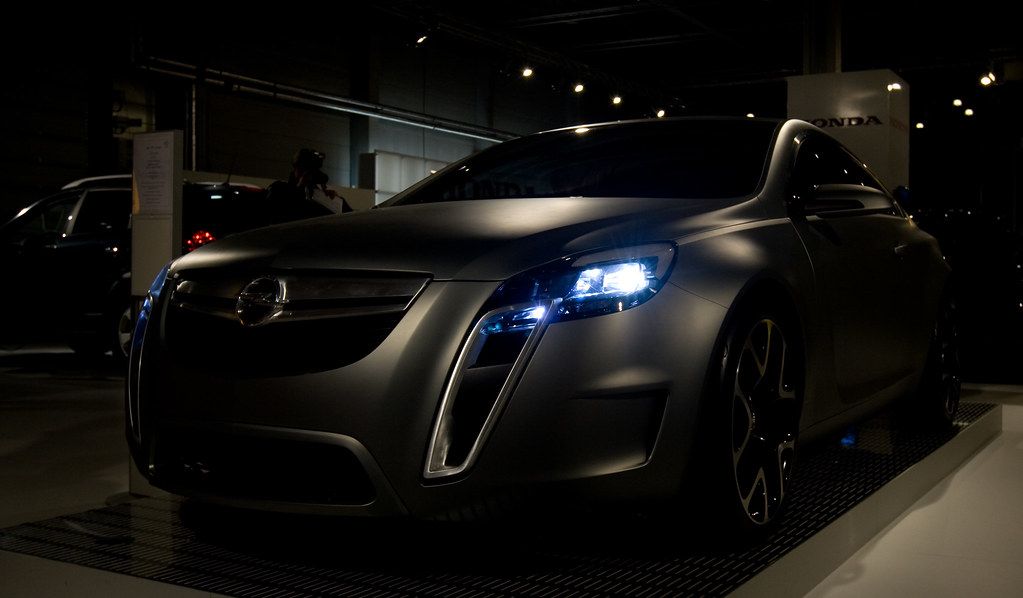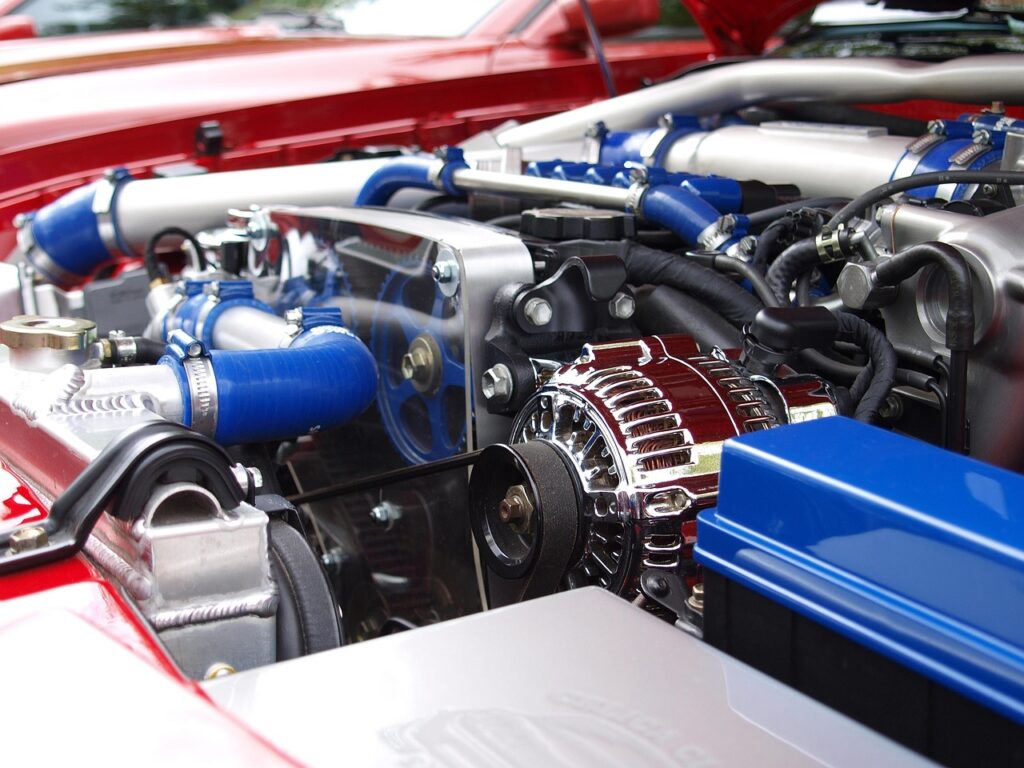
The automotive landscape is replete with legends, machines that have etched their names into history with groundbreaking performance, iconic designs, and a relentless pursuit of speed. From the roar of a classic V8 Mustang to the sculpted lines of a Jaguar E-Type, certain sports cars naturally command the spotlight, captivating enthusiasts and collectors alike. Yet, beneath this glittering surface lies a rich substratum of vehicles that, despite their undeniable prowess and exhilarating driving experiences, have been unfairly overlooked, their true value underestimated.
The term “underrated” perfectly encapsulates these automotive treasures – cars not given enough credit, recognition, or praise for their true value, quality, or importance. They are the hidden gems, the quiet achievers that may have been overshadowed by more aggressive aesthetics or simply failed to capture the public imagination in their prime. For the true enthusiast, however, these cars represent an opportunity: a chance to discover exceptional engineering and driving pleasure without the inflated price tags or the clamor of mainstream adoration.
In this deep dive, we pull back the curtain on these unsung heroes. We will meticulously examine their specifications, delve into their engineering nuances, and celebrate the driving experiences they offer. Prepare to rediscover sports cars that deliver serious performance, sharp handling, and a connection to the road that remains profoundly engaging, proving that sometimes, the underdogs are indeed the real winners.
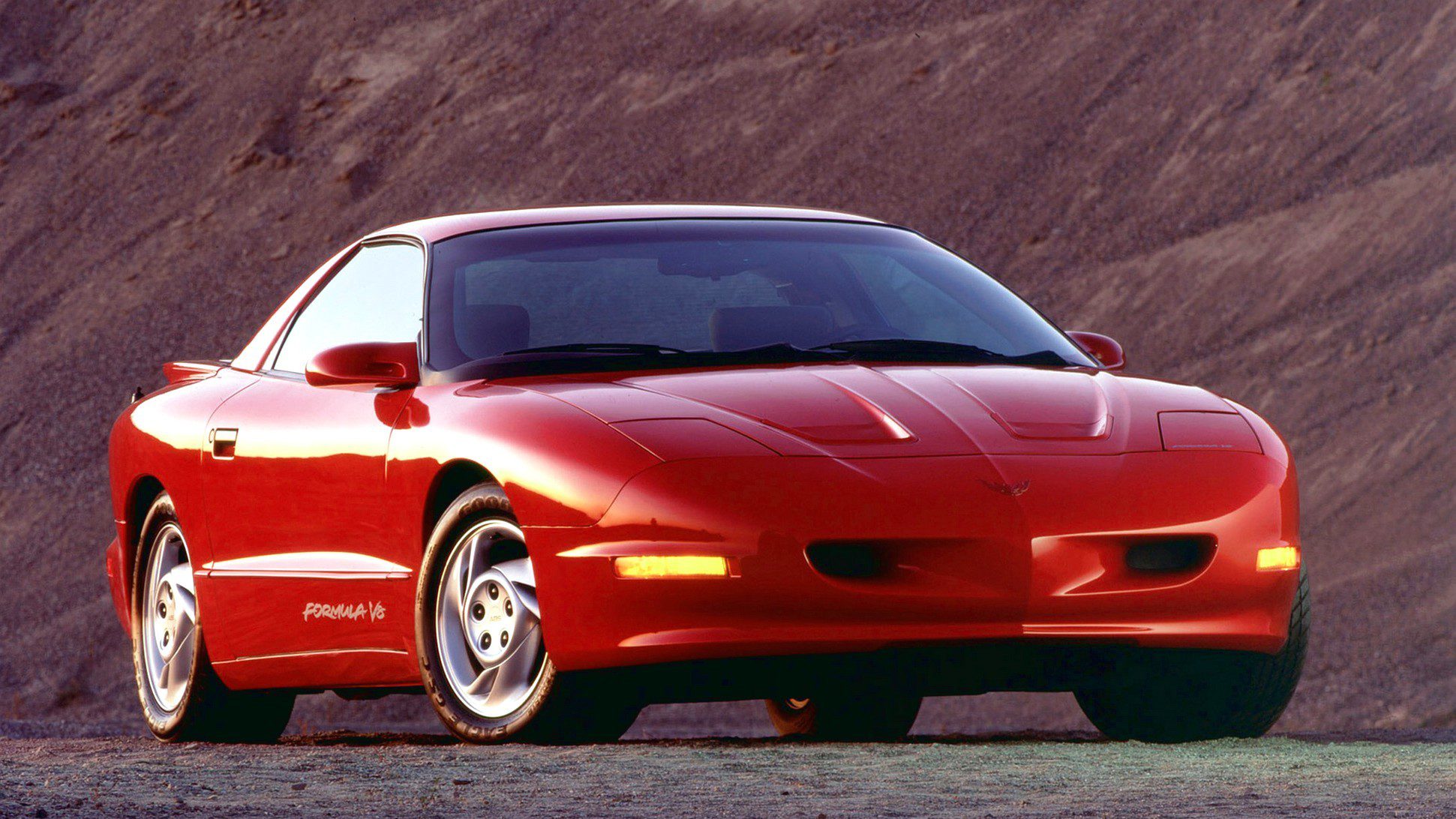
1. **Pontiac Solstice GXP: A Small Roadster with Big Performance**The Pontiac Solstice, especially its GXP variant, often stands out as a delightful surprise in the world of compact roadsters. While the base model with its simple 2.4-liter inline-4 engine was adequate, it was the GXP that truly transformed this small car into an exciting driver’s machine. It’s often “underrated” because the Pontiac brand might not immediately evoke images of high-performance roadsters, yet the GXP defied these expectations with its focused engineering.
What truly propelled the Solstice GXP into the realm of serious sports cars was its powertrain. Under the hood resided a turbocharged 2.0-liter inline-4 engine, delivering a robust “260 hp and 260 lb-ft of torque.” This significant output was more than sufficient for an exhilarating ride in a car of its size. The option to “further boost the power to 290 hp” only amplified its performance capabilities, pushing it closer to more recognized contenders.
Beyond the impressive power figures, the Solstice GXP truly shone in its dynamic behavior. The context highlights it as “a fun, affordable roadster with excellent handling and performance.” This agile demeanor, combined with its lively turbocharged engine and rear-wheel-drive setup, made for a remarkably engaging driving experience. Its compact wheelbase contributed to a direct and responsive feel, particularly on winding roads, inviting drivers to explore its limits with confidence.
The GXP’s appeal lies in its ability to offer a pure, unadulterated roadster experience without demanding a premium price. For enthusiasts seeking an accessible yet potent open-top machine, the Solstice GXP remains a compelling, if often overlooked, choice. It intelligently blends spirited performance and commendable affordability, proving that genuine thrills don’t always require a six-figure badge.
Car Model Information: 2009 Pontiac Solstice
Name: Pontiac Solstice
Manufacturer: General Motors
Production: 2005–2010,65,724 produced
ModelYears: 2006–2010
Assembly: Wilmington, Delaware
Class: Sports car
Layout: Front-engine, rear-wheel-drive layout#Front mid-engine, rear-wheel-drive layout
Platform: GM Kappa platform
Predecessor: Pontiac Fiero
BodyStyle: Roadster (automobile),targa top
Wheelbase: 95.1 in
Abbr: on
Length: 161.1 in
Width: 71.4 in
Height: 50.2 in
Weight: 2860 lb
Engine: GM Ecotec engine#LE5,GM Ecotec engine#2.0 LNF (Z20NHH Opel)
Transmission: Aisin Seiki,GM 5L40 transmission
Related: Saturn Sky,Opel GT#GT (roadster) (2007–2010),Daewoo G2X
Designer: Franz von Holzhausen,Vicki Vlachakis,Wayne Cherry
Categories: All articles needing additional references, All articles with unsourced statements, Articles needing additional references from March 2025, Articles with short description, Articles with unsourced statements from March 2025
Summary: The Pontiac Solstice is a convertible sports car that was produced by Pontiac from 2005 to 2010. Introduced at the 2004 North American International Auto Show, the Solstice roadster began production in Wilmington, Delaware, starting in mid-2005 for the 2006 model year. It is powered by a naturally aspirated 2.4 L I4 engine, producing 177 hp (132 kW) and 166 lb⋅ft (225 N⋅m) of torque.
The exterior styling of the production Solstice is similar to that of the 2002 Solstice concept that preceded it. Production of the Solstice was to be running before summer 2005, but delays at the Wilmington plant pushed volume production to the fourth quarter. The new hardtop targa top 2009 model was announced in mid-2008. The Solstice uses the GM Kappa platform, which also underpins the Saturn Sky, Opel GT, and Daewoo G2X. It was the brand’s first two-seater since the Pontiac Fiero was discontinued in 1988.
The Solstice was nominated for the North American Car of the Year award and Design of the Year award from the Automobile Journalists Association of Canada (AJAC) for 2006. It was a runaway hit for Pontiac, with 7,000 orders in the first 10 days of availability and 6,000 more orders before winter. Although first-year production was planned at 7,000, GM apologized to customers for delays and increased production, delivering 10,000 by March 1.
Following the 2008 economic recession, GM discontinued the Pontiac division. Production ended with the closure of the Wilmington Assembly plant in July 2009.
Get more information about: Pontiac Solstice
Buying a high-performing used car >>>
Brand: Pontiac Model: Solstice
Price: $15,700 Mileage: 49,557 mi.
Read more about: Unearthing Hidden Performance: 14 Underrated Sports Cars That Defy Expectations for Today’s Performance Seekers
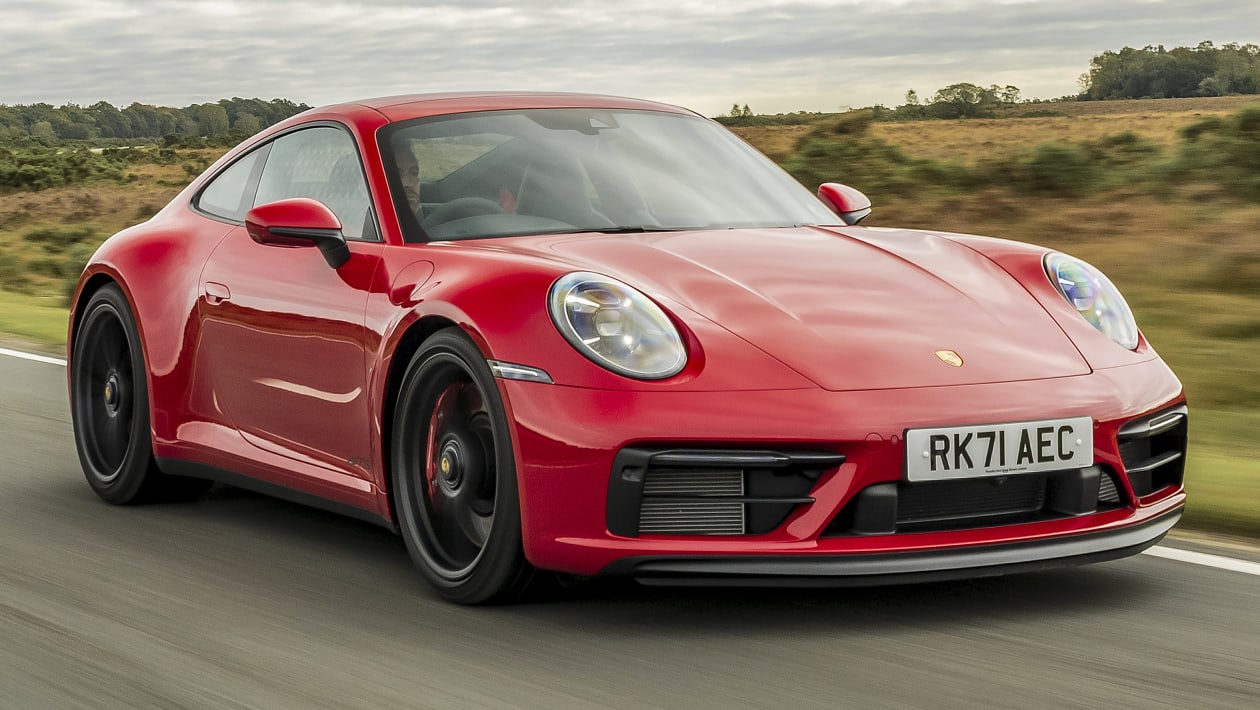
2. **Porsche 924: An Entry-Level Classic with Perfect Balance**The Porsche 924 often finds itself “lost in the shadow of the 944 and the legendary 911,” a testament to its “underrated” status. Yet, this model was a pivotal entry for Porsche, initially conceived for Volkswagen before becoming Porsche’s affordable gateway into their revered lineup. Its engineering significance and role in broadening the brand’s appeal are often overlooked by the glamour of its siblings, making it a compelling subject for reconsideration.
At its core, the 924 featured a “2.0-liter engine,” engineered for balance and accessibility rather than raw power. The context emphasizes a crucial design philosophy: “the rear-mounted transaxle gave the 924 near-perfect weight distribution.” This fundamental engineering decision defined the car’s character, elevating its driving dynamics far beyond what its modest engine might suggest. It showcased Porsche’s commitment to foundational driving excellence, even in an entry-level package.
The result of this meticulous weight distribution was “fantastic handling that made it a joy to drive.” The 924 demonstrated that a truly engaging sports car experience isn’t solely about raw horsepower, but the harmonious interaction of chassis, suspension, and driver input. It evolved over time, eventually receiving upgrades, including a “2.5-liter engine,” and becoming the foundation for the more powerful Porsche 944, solidifying its place in Porsche’s development history.
The 924 is a genuine classic, a reminder of Porsche’s strategic intent to make sports cars accessible without compromising core driving purity. Its enduring appeal lies in its honest, balanced approach to sports car design, offering “excellent handling and a comfortable ride.” For those seeking an approachable entry point into the Porsche experience, the 924 truly deserves more than a passing glance.
Car Model Information: 1988 Porsche 924 S
Name: Porsche 924
Designer: Harm Lagaay
Manufacturer: Porsche
Production: 1976–1988
Assembly: Neckarsulm,Stuttgart
Class: Sports car
Layout: Front-engine, rear-wheel-drive layout
BodyStyle: 2+2 (car body style),coupé
Engine: List of discontinued Volkswagen Group petrol engines#EA831,Turbocharger,2.5 L M44/40 I4
Transmission: Magna PT
Length: 4200 mm
Abbr: on
Wheelbase: 2400 mm
Width: 1685 mm
Height: 1270 mm
Weight: 1242 kg
Predecessor: Porsche 914
Successor: Porsche 944
Categories: 1980s cars, 2+2 coupés, All articles needing additional references, Articles needing additional references from September 2024, Articles with short description
Summary: The Porsche 924 is a sports car produced by Porsche in Neckarsulm, Germany, from 1976 until 1988. A two-door, 2+2 coupé, the 924 replaced the 912E and 914 as the company’s entry-level model.
Although the 928 was designed first, the 924 was the first production road-going Porsche to use water cooling and a front-engine, rear-wheel-drive layout. It was also the first Porsche to be offered with a conventional fully automatic transmission. Like the 914, the 924 began as a joint venture with Volkswagen (VW). Although VW canceled plans to sell a version under its own nameplate, opting to market the independently-developed Scirocco instead, the 924 was assembled in a VW-operated plant and initially used a VW engine.
The 924 made its public debut in November 1975 and a turbocharged version was introduced in 1978. In response to increasing competition, Porsche introduced an upgraded version with a new Porsche-built engine as the 944, which replaced the 924 in the U.S. in 1983. In 1985, VW discontinued the engine used in the 924, prompting Porsche to use a slightly detuned 944 engine instead, drop the Turbo model, rename the vehicle as the 924S, and reintroduce it in the U.S. The 924 was a sales success, with just over 150,000 produced.
Get more information about: Porsche 924
Buying a high-performing used car >>>
Brand: Porsche Model: 924
Price: $2,500 Mileage: 94,713 mi.
Read more about: Unearthing Hidden Performance: 14 Underrated Sports Cars That Defy Expectations for Today’s Performance Seekers
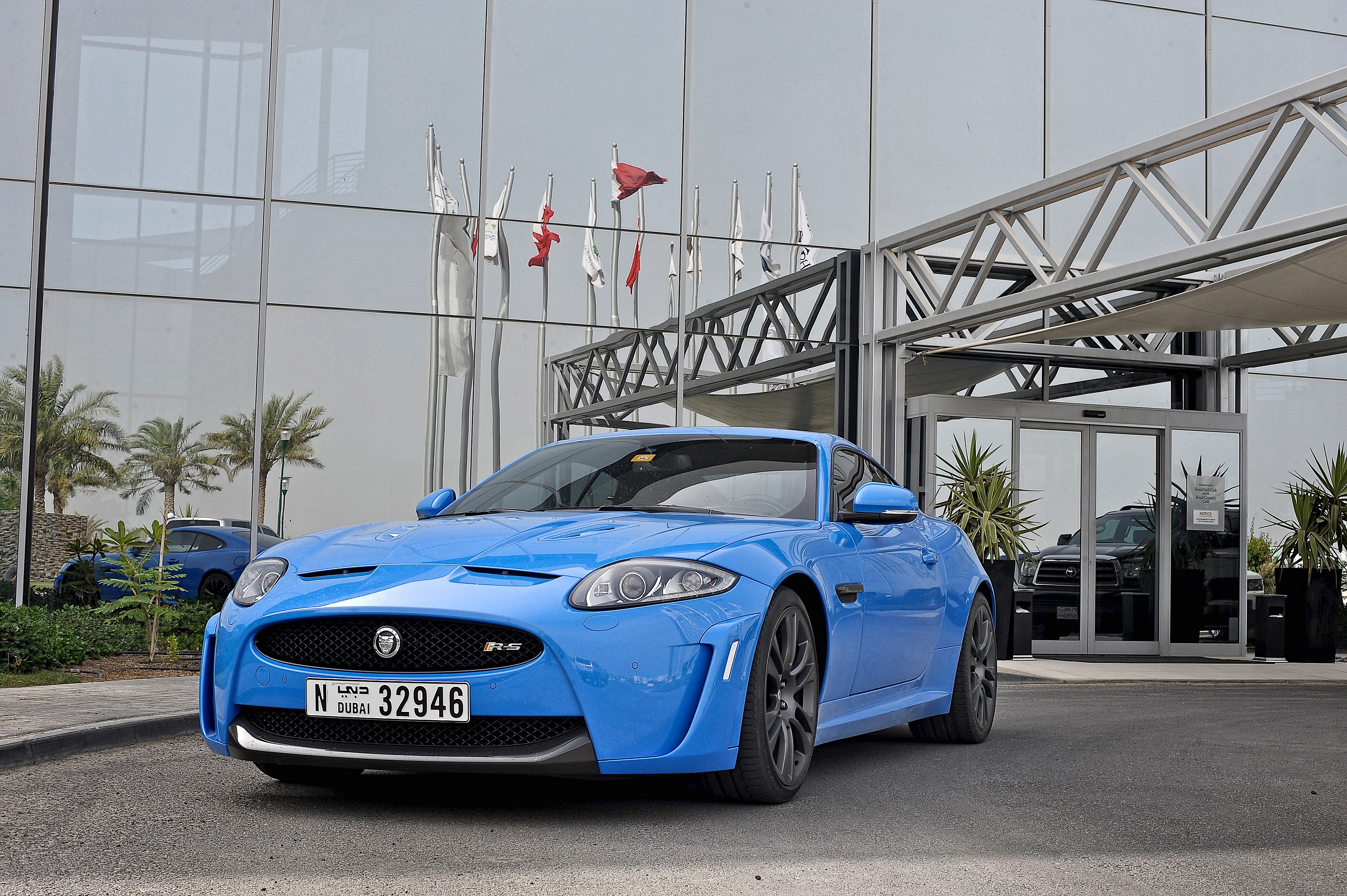
3. **2010 Jaguar XKR: A Luxurious GT with Unassuming Power**The Jaguar XKR, particularly the facelifted 2010 model, represents a luxurious grand tourer that possesses far more performance than its elegant aesthetics might suggest, often leading to its “underrated” status. Part of the distinguished XK series, it combined the refined charm expected of a Jaguar with the brute force of a high-performance machine. This blend of sophistication and power, while impressive, often failed to garner the aggressive recognition given to more overtly sporty rivals.
Underneath its sleek bonnet, the 2010 XKR housed a formidable “supercharged 5.0-liter V8, producing up to 510 hp.” This powertrain was a testament to Jaguar’s commitment to delivering exhilarating performance, ensuring the XKR was not merely a comfortable cruiser but a genuinely fast car. This substantial output provided both rapid acceleration and effortless high-speed cruising, positioning it against high-end sports coupes.
Beyond raw power, the XKR was engineered for adaptable performance. It came “equipped with Jaguar Drive Control, offering three different driving modes to optimize performance,” allowing drivers to tailor the car’s dynamics. While earlier models “struggled with reliability,” the 2010 iteration benefited from significant refinements, presenting a “well-rounded, high-performance vehicle” that combined thrilling speed with improved dependability and inherent Jaguar luxury.
The Jaguar XKR, especially this improved model year, is a “sleek and powerful grand tourer that deserves more recognition for its balance of luxury and performance.” It offered an engaging driving experience that effortlessly blended supreme comfort with prodigious power, all wrapped in a visually stunning package. For enthusiasts who appreciate a more understated approach to high-performance, the XKR provides a compelling, sophisticated alternative that delivers on every front.
Car Model Information: 2008 Jaguar XKR Base
Name: Jaguar XK
Caption: Jaguar XKR (X150)
Manufacturer: Jaguar Cars,Jaguar Land Rover
Aka: Jaguar XKR/XK8
Production: 1996–2014
ModelYears: 1996–2015
Assembly: Coventry
Predecessor: Jaguar XJS
Successor: Jaguar F-Type
Class: Grand tourer
BodyStyle: coupé,liftback,convertible
Layout: Front-engine, rear-wheel-drive layout
Platform: Jaguar XJS,Jaguar XJ (X350)
Engine: Jaguar AJ-V8 engine
Transmission: unbulleted list
Designer: Geoff Lawson (designer),Ian Callum
Sp: uk
Categories: 2000s cars, All Wikipedia articles written in British English, Articles with short description, Cars introduced in 1996, Commons category link from Wikidata
Summary: The Jaguar XK is a two-door 2+2 grand tourer manufactured and marketed by Jaguar Cars from 1996–2012 and by Jaguar Land Rover from 2013–2014 in hatchback coupé and convertible body styles, across two generations. The XK was introduced at the Geneva Motor Show in March 1996 and was discontinued in July 2014.
The first generation was marketed as the XK8, replacing the XJS and was Jaguar’s first 8-cylinder model since the Daimler 250, introducing the all-new Jaguar AJ-V8 engine. The XK8 shared its platform with the Aston Martin DB7 which was itself based on the stillborn XJ41/42 project built on a modified XJ-S chassis conceived in the mid-1980s. The second generation of the XK, noted for its aluminium monocoque chassis and construction, was launched in 2006 for the 2007 model year. The XKR performance variant was introduced in both of the generations with the second generation also offering a more powerful XKR-S variant.
Get more information about: Jaguar XK
Buying a high-performing used car >>>
Brand: Jaguar Model: XKR
Price: $34,981 Mileage: 12,667 mi.
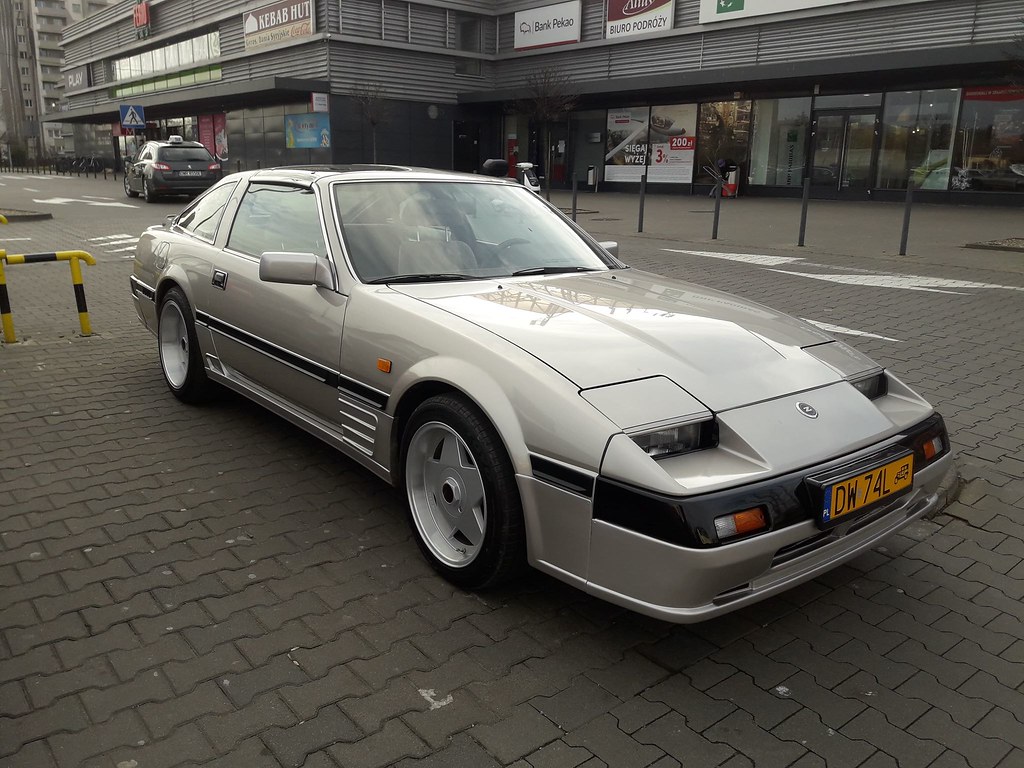
4. **1995 Nissan 300ZX (Z32): A Z-Car with Overlooked Substance**The Nissan 300ZX, particularly the Z32 generation, holds a curious position in sports car history. Despite being part of the iconic Z-car lineage, it initially “faced criticism for being heavy and underpowered compared to some rivals,” contributing to its “underrated” status. However, beneath this initial perception lay a truly “fantastic sports car,” one that was technologically advanced and offered a deeply engaging driving experience that still holds up today.
The heart of the 300ZX Z32 was its sophisticated “3.0-liter V6 engine.” While the naturally aspirated version was capable, it was the “turbocharged variant [that] produced close to 300 hp,” offering a substantial boost in performance. The context specifies that its real-world figures were “closer to 300” horsepower even if officially rated at 276 horsepower due to Japan’s gentleman’s agreement, a true powerhouse for its era that could rival more exotic machinery.
Beyond the engine, the 300ZX Z32 was engineered for a superior driving experience. It offered “excellent handling and a distinctive exhaust note,” making it a “hidden gem in the sports car world.” The car’s wide stance and low center of gravity contributed to its remarkable stability and cornering prowess. Paired with its engaging power delivery, the 300ZX provided a tactile and immersive connection with the road, rewarding skilled drivers with precise feedback and exhilarating dynamics.
The Nissan 300ZX Z32, alongside the Toyota Supra, “helped define Japanese performance in the ’90s.” Despite initial criticisms, it was a “well-engineered, fun-to-drive sports car” that delivered a sophisticated blend of power, handling, and advanced technology. For those who delve beyond surface-level perceptions, the Z32 reveals itself as a brilliant piece of engineering that continues to offer immense value and a genuinely rewarding driving experience, solidifying its place as a truly underrated icon.
Car Model Information: 1990 Nissan 300ZX GS
Name: Nissan 300ZX
Class: Grand Tourer
Manufacturer: Nissan
Production: 1983–2000
Assembly: ubl
Aka: Nissan Fairlady Z
Layout: Front-engine, rear-wheel-drive layout
Predecessor: Nissan Fairlady Z (S130)
Successor: Nissan 350Z
Categories: 1990s cars, 2+2 coupés, All articles needing additional references, All articles with unsourced statements, Articles needing additional references from May 2021
Summary: The Nissan 300ZX is a sports car that was produced across two different generations. As with all other versions of the Z, the 300ZX was sold within the Japanese domestic market under the name Fairlady Z.
It was sold in Japan from 1983 to 2000 and in the United States from 1984 to 1996, the 300ZX name followed the numerical convention initiated with the original Z car, the Nissan Fairlady Z (S30), which was marketed in the U.S. as the 240Z. The addition of the “X” to the car’s name was a carryover from its predecessor, the 280ZX, to signify the presence of more luxury and comfort oriented features. The first generation 300ZX known as the Z31 model was produced from 1983 through 1989 and was a sales success becoming the highest volume Z-car for Nissan.
To become even more competitive in the sports car market, the second generation 300ZX was driven up-market. It was redesigned to be faster and to feature more advanced technology, but came with a higher price than its predecessor, with consecutive price increases each model year of availability. As such, sales dwindled each year, a trend in the higher end sports car market at the time, and Nissan placed a hiatus on selling new Nissan Z-Cars to the US after the 1996 model year, though the car would continue to be sold in the Japan domestic market until 2001 in low production numbers.
Car and Driver placed the Z32 on its Ten Best list for seven consecutive years, each model year of its availability in the United States. Motor Trend awarded it as the 1990 Import Car of the Year. The Nissan 350Z, officially the Z33 generation Z-Car, succeeded the 300ZX in 2003.
Get more information about: Nissan 300ZX
Buying a high-performing used car >>>
Brand: Nissan Model: 300ZX
Price: $24,664 Mileage: 21,680 mi.

5. **2016 Ford Mustang EcoBoost: Lighter, Agile, and Surprisingly Potent**The Ford Mustang EcoBoost might seem like an “unorthodox choice” for an enthusiast’s list of underrated sports cars, given its 4-cylinder engine in a lineage dominated by V8s. This perception often leads to its “underrated” status, as purists might dismiss it in favor of the GT model. However, to overlook this variant is to miss out on a highly capable sports car that prioritizes agility and balance, offering a distinctly different, yet equally thrilling, Mustang experience.
At the core of this agile Mustang is its “2.3-liter EcoBoost engine,” which, despite having half the cylinders of its V8 brethren, impressively “produces 310 hp.” This turbocharged inline-four not only delivers substantial power but also makes the car “lighter than the V8 variant, making it more agile and responsive.” This reduction in front-end weight fundamentally alters the car’s dynamics, allowing for quicker turn-in and a more nimble feel than traditional V8-powered Mustangs.
Ford also offered a crucial “Handling Package option” that further sharpened the EcoBoost’s capabilities. This package included upgrades such as “larger tires, Brembo brakes, and MagneRide adaptive dampers,” transforming the car into a truly track-capable machine. These enhancements underscore the EcoBoost’s potential as a serious performance car, enabling it to deliver exceptional grip, stopping power, and adaptive control, pushing its handling prowess beyond initial expectations.
The Mustang EcoBoost cleverly “retains the iconic Mustang look” while providing a more economical price tag and a distinctly modern driving experience centered around precision and agility. It’s a “great choice for performance enthusiasts on a budget” who prioritize balance and responsiveness over sheer V8 rumble. This specific model challenges preconceived notions, proving that a Mustang can be a sophisticated, agile sports car that is genuinely “fun to drive” and offers immense value, truly earning its place among the underrated.
Car Model Information: 2023 Mazda Mazda3 FWD w/Select Package
Name: Ford EcoBoost engine
Manufacturer: Ford Motor Company
Aka: TwinForce (obsolete),EcoBoost SCTi,GTDi
Production: 2009–present
Predecessor: ubl
Configuration: Straight-3,Straight-4
Displacement: Cubic inch displacement#Engine displacement
Bore: V6 3.5: 3.64 in (92.5 mm),V6 3.0: 3.36 in (85.3 mm),V6 2.7: 3.30 in (83 mm),I4 2.3: 3.45 in (87.55 mm),I3 1.5: 3.31 in (84 mm),I3 1.0: 2.83 in (71.9 mm)
Stroke: V6 3.5: 3.41 in (86.7 mm),V6 3.0: 3.39 in (86 mm),V6 2.7: 3.30 in (83 mm),I4 2.3: 3.7 in (94.0 mm),I4 2.3 “MPC”: 4.0 in (102 mm),I4 2.0: 3.27 in (83.1 mm),I4 1.6: 3.2 in (81.4 mm),I3 1.5: 3.54 in (90 mm),I3 1.0: 3.2 in (82 mm)
Weight: V6 3.5: 449 lbs (203 kg),V6 3.0: 445 lbs (202 kg),V6 2.7: 440 lbs (200 kg),I4 2.0: 328 lbs(149 kg),I4 1.6: 251 lbs (114 kg),I3 1.0: 213 lbs (97 kg)
Block: Compacted graphite iron
Head: Aluminum
Valvetrain: DOHC
Turbocharger: Borg Warner
Fuelsystem: Gasoline direct injection
Management: CAN-Bus
Fueltype: Gasoline
Oilsystem: Wet sump
Coolingsystem: Radiator (engine cooling)
Compression: V6 3.5: 10.0:1(10.5:1 MY2017),V6 3.0: 9.5:1,V6 2.7: 10.3:1,I4 2.3: 9.5:1
,I4 2.3 “MPC”: 10.6:1,I4 2.0: 10.0:1,I4 1.6: 10.0:1,I3 1.5: 9.7:1
Categories: 2009 introductions, All Wikipedia articles in need of updating, All articles to be expanded, All articles with bare URLs for citations, All articles with dead external links
Summary: EcoBoost is a series of turbocharged, direct-injection gasoline engines produced by Ford and originally co-developed by FEV Inc. (now FEV North America Inc.). EcoBoost engines are designed to deliver power and torque consistent with those of larger-displacement (cylinder volume) naturally aspirated engines, while achieving up to 20% better fuel efficiency and 15% fewer greenhouse emissions, according to Ford. The manufacturer sees the EcoBoost technology as less costly and more versatile than further developing or expanding the use of hybrid and diesel engine technologies. EcoBoost engines are broadly available across the Ford vehicle lineup.
Get more information about: Ford EcoBoost engine
Buying a high-performing used car >>>
Brand: Ford Model: Mustang EcoBoost
Price: $17,197 Mileage: 57,859 mi.
Read more about: Unearthing Hidden Performance: 14 Underrated Sports Cars That Defy Expectations for Today’s Performance Seekers
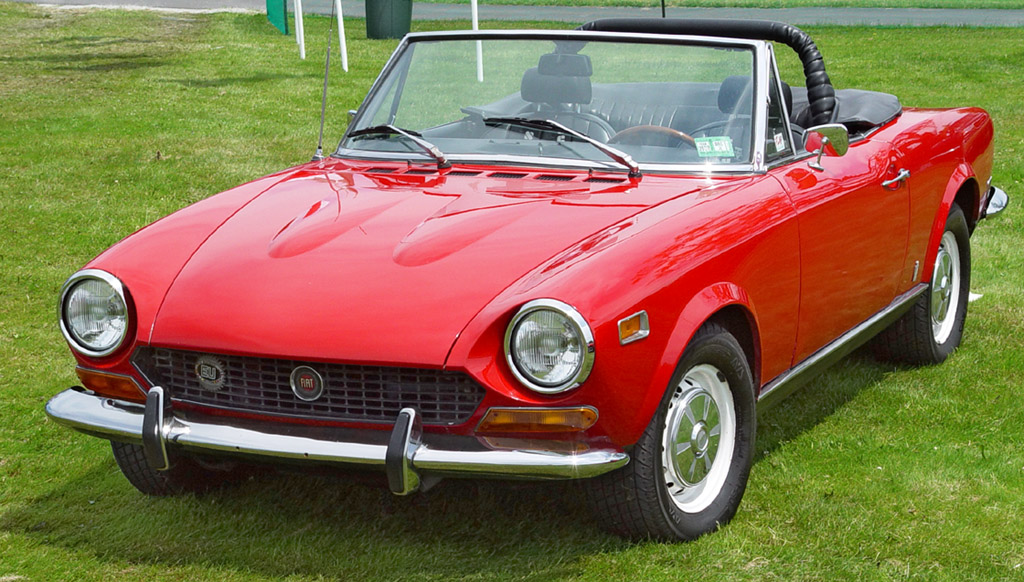
6. **2017 Fiat 124 Spider: A Cheaper Italian Roadster with Unique Character**The Fiat 124 Spider, particularly the 2017 model, often flies under the radar, largely because it shares its platform with the immensely popular Mazda MX-5 Miata. This close relationship means it’s frequently “overshadowed by the MX-5,” leading to its “underrated” standing despite offering a distinct, “cheaper Italian Roadster” experience. It’s a compelling alternative that provides a unique blend of heritage, style, and turbocharged fun.
While sharing its chassis, the 124 Spider differentiates itself significantly through its powertrain. It is “powered by a 1.4-liter turbocharged engine,” which, in the context of the Mazda MX-5’s naturally aspirated unit, offers a “different character.” This engine delivers a satisfying “160 horsepower,” providing “plenty of punch while maintaining excellent fuel economy.” The turbocharged delivery of power results in a different torque curve and a distinct driving feel, appealing to those who prefer forced induction.
Beyond the engine, the Fiat 124 Spider boasts a unique aesthetic and interior ambiance. Its “Italian styling sets it apart from other roadsters, with a refined interior and unique exterior design that exudes sophistication.” While the MX-5 focuses on minimalism, the 124 Spider offers “a slightly more luxurious feel with its interior details,” creating a more upscale yet still driver-focused cabin. This distinctive design and interior refinement contribute to its allure, providing an alternative for those seeking Italian flair.
The 124 Spider is lauded for being “nimble and agile, with precise steering and a well-tuned suspension, making it perfect for spirited drives.” It successfully combines the renowned driving dynamics of its platform with its own turbocharged personality and elegant design. For enthusiasts seeking an open-top sports car that offers an “exciting driving experience” with a touch of Italian panache and affordability, the 2017 Fiat 124 Spider is a genuinely “underrated sports car.”
Car Model Information: 2023 Mazda Mazda3 FWD w/Select Package
Name: Fiat 124 Sport Spider
Caption: Fiat 124 Sport Spider (CS)
Aka: Fiat Spider 2000 , Pininfarina Spider (1982–1985)
Manufacturer: Fiat Automobiles
Production: 1966–1985
Assembly: Turin
Designer: Pininfarina,Tom Tjaarda,Franco Martinengo (design director),Battista Pininfarina
Class: Sports car
BodyStyle: Cabriolet (automobile)
Layout: Front-engine, rear-wheel-drive layout
Related: Fiat 124
Engine: {{convert,1438,cc,L,1,abbr=on,Inline-four engine
Abbr: on
Transmission: Manual transmission,5-speed manual,Automatic transmission
Wheelbase: 89.75 in
Length: 156.25 in
Width: 63.5 in
Height: 49.25 in
Weight: 2028 lb
Predecessor: Fiat Pininfarina Cabriolet
Successor: Fiat Barchetta,Fiat 124 Spider (2016)
Sp: uk
Categories: 1960s cars, 1970s cars, 1980s cars, All articles with dead external links, Articles with dead external links from August 2025
Summary: The Fiat 124 Sport Spider is a convertible sports car marketed by Fiat for model years 1966–1982 and by Pininfarina for 1982–1985 model years. Designed by and manufactured at the Italian carrozzeria Pininfarina factory, the monocoque, front-engined, rear-drive Sport Spider debuted at the November 1966 Turin Auto Show with styling by Tom Tjaarda.
Fiat later marketed the car as the Spider 2000 (1979–1982). After being retired by Fiat, Pininfarina continued the production of the model under its own brand as Pininfarina Spider Azzurra for the North American market and Pininfarina Spidereuropa for the European market for three more years, from August 1982 until 1985.
In 2015, a successor of the Fiat 124 Spider was presented at the Los Angeles Auto Show.
Get more information about: Fiat 124 Sport Spider
Buying a high-performing used car >>>
Brand: Fiat Model: 124 Spider
Price: $17,197 Mileage: 57,859 mi.
Read more about: Unearthing Hidden Performance: 14 Underrated Sports Cars That Defy Expectations for Today’s Performance Seekers

7. **2015 Lexus RC F: A Reliable High-Performance Coupe with Serious Punch**The 2015 Lexus RC F might not immediately spring to mind when discussing typical sports cars, largely due to its “size and luxury-oriented design.” This often leads to its “underrated” classification, as it straddles the line between luxury grand tourer and high-performance coupe, often being overshadowed by more overtly aggressive or track-focused rivals. However, to underestimate the RC F’s capabilities would be a significant mistake, as it truly “packs a serious punch.”
Under its aggressive styling lies a performance heart that commands respect: a “5.0-liter naturally aspirated V8 engine producing 470 hp.” This powerful V8 delivers a visceral, linear power delivery that is increasingly rare in an era dominated by forced induction. It allows the RC F to offer “both luxury and performance in spades,” making it a versatile machine capable of swift acceleration and effortless high-speed cruising for discerning drivers.
The RC F wasn’t just about straight-line speed; it was engineered for dynamic prowess. Its “aggressive styling, torque-vectoring differential, and sport-tuned suspension make it a strong contender against competitors like the BMW M4.” The torque-vectoring differential, in particular, enhances cornering capability by intelligently distributing power between the rear wheels, allowing for sharper turn-in and greater stability, belying its luxury appearance.
Crucially, Lexus’s renowned “reputation for reliability makes the RC F a sensible choice for a high-performance coupe that can also be a daily driver.” This combination of exhilarating performance, sophisticated luxury, and segment-leading dependability makes the 2015 Lexus RC F a uniquely compelling and “underrated sports car.” It’s a testament to Lexus’s ability to fuse thrilling dynamics with everyday usability, offering a truly well-rounded, high-performance package for the discerning enthusiast.
Car Model Information: 2023 Mazda Mazda3 FWD w/Select Package
Name: Lexus RC
Caption: Lexus RC F Final Edition (USC10, Japan)
Manufacturer: Toyota
ModelCode: XC10
Production: October 2014 – present
ModelYears: 2015–2025
Assembly: Tahara, Aichi
Designer: Pansoo Kwon (2012)
Class: Sports car
BodyStyle: coupé
Layout: unbulleted list
Platform: Toyota N platform#New N
Related: unbulleted list
Engine: unbulleted list
Motor: unbulleted list
Abbr: on
Powerout: unbulleted list
Transmission: unbulleted list
Wheelbase: 2730 mm
Length: convert
Width: convert
Height: convert
Weight: convert
Predecessor: Lexus IS (XE20)#GSE20 / GSE21 (2008)
Sp: uk
Categories: 2020s cars, All-wheel-drive vehicles, All articles containing potentially dated statements, All articles with dead external links, All articles with unsourced statements
Summary: The Lexus RC is a compact executive two-door sport coupé manufactured by Lexus, Toyota’s luxury division. The RC which according to Lexus stands for “Radical Coupe” is a two-door coupé version of the Lexus IS (XE30). The RC is designated as the XC10 series. The RC borrowed styling from the LF-LC concept and was previewed by the LF-CC concept, being designed as a proposal by Pansoo Kwon from 2010 to early 2012 and approved by supervising designers Yasuo Kajino and Tatsuya Takei.
Get more information about: Lexus RC
Buying a high-performing used car >>>
Brand: Lexus Model: RC F
Price: $17,197 Mileage: 57,859 mi.
Read more about: The Perils of Prestige: 15 Luxury Models Buyers Would Unbuy for Superior Reliability
8. **2008 Mazda RX-8: A Rotary-Powered Sports Car**The Mazda RX-8 stands as a truly unique proposition in the sports car world, largely due to its unconventional heart: Mazda’s distinctive rotary engine. For many, its ‘underrated’ status comes from the engine’s unique characteristics and the car’s subtle approach to performance, often overshadowed by more conventional piston-engined rivals. Yet, for those who appreciate something truly different, the RX-8 offers a driving experience that is genuinely unlike any other, making it a compelling subject for reconsideration.
At the core of its appeal is the 1.3-liter RENESIS twin-rotor engine, which, while generating around 232 hp, delivers a smooth, high-revving power band. This allows for an exhilarating, almost turbine-like acceleration that encourages drivers to push towards its lofty redline. The RX-8’s low curb weight, combined with a precise, engaging handling setup and a classic rear-wheel-drive layout, ensures that every spirited drive is a tactile and rewarding experience, demonstrating that raw horsepower isn’t the sole determinant of driver satisfaction.
Adding to its distinctiveness is the RX-8’s unique 4-door layout, featuring innovative ‘freestyle’ doors that hinge at the rear to provide surprisingly practical access for four passengers. This blend of sports car dynamics with enhanced functionality sets it apart from typical two-door coupes. While rotary engines are known for requiring diligent maintenance and the model was eventually discontinued due to stricter emission regulations, the RX-8 remains a thrilling testament to Mazda’s engineering legacy, a car that truly defied traditional sports car conventions.
Read more about: Unearthing Hidden Performance: 14 Underrated Sports Cars That Defy Expectations for Today’s Performance Seekers

9. **2006 Chrysler Crossfire SRT-6: A Mercedes-Benz-Designed Roadster**The Chrysler Crossfire SRT-6 often finds itself unfairly dismissed, its ‘underrated’ tag stemming from a design that sparked debate and a brand association not typically linked with high-performance sports cars. However, beneath its distinctive exterior lies an impressive mechanical foundation, built upon the renowned Mercedes-Benz SLK platform, making it a surprising yet potent machine that deserves a closer look from enthusiasts.
What truly elevates the SRT-6 variant beyond the standard Crossfire is its formidable powertrain. This iteration comes equipped with a supercharged 3.2-liter V6 engine, a Mercedes-Benz AMG unit, producing a robust 330 hp. This significant power output, delivered through a well-sorted chassis inherited from its German counterpart, ensures the Crossfire SRT-6 is far more than just a stylistic exercise; it’s a genuinely quick and capable performer, particularly in a straight line.
Visually, the Crossfire SRT-6 draws inspiration from the Art Deco period, featuring sleek lines, pronounced fenders, and an aggressive stance that certainly makes a statement. While its aesthetics are polarizing, the underlying Mercedes engineering expertise shines through in its driving dynamics. It offers a comfortable yet engaging driving experience, a testament to its European roots, proving that even an unexpected collaboration can yield a high-performance vehicle with surprising depth and composure, even if it didn’t initially capture the public’s widespread imagination.
Car Model Information: 2023 Mazda Mazda3 FWD w/Select Package
Name: Chrysler Crossfire
Caption: 2004 Chrysler Crossfire coupe
Manufacturer: DaimlerChrysler
Production: February 2003 – December 2007 (76,014 units)
ModelYears: 2004–2008
Assembly: Germany
Designer: Eric Stoddard
Class: Sports car
BodyStyle: convertible (car),fastback
Platform: Chrysler ZH,Mercedes-Benz SLK-Class (R170)
Related: Mercedes-Benz SLK-Class (R170)
Layout: Front-engine, rear-wheel-drive layout
Engine: Mercedes-Benz
Transmission: Mercedes-Benz,Chrysler NSG370 transmission
Wheelbase: 94.5 in
Abbr: on (roadster)
Length: 159.8 in
Width: 69.5 in
Height: {{convert,51.5,in,mm,0,abbr=on
Predecessor: Chrysler Prowler,Chrysler TC by Maserati
Categories: Articles with short description, Cars discontinued in 2007, Cars introduced in 2003, Chrysler vehicles, Commons category link from Wikidata
Summary: The Chrysler Crossfire is a rear-wheel drive, two-seat sports car, marketed by Chrysler and manufactured by Karmann of Germany from 2004 through the 2008 model years.
Developed during the period when Chrysler and Mercedes Benz had merged, known as Daimler Chrysler, the two-seater uses the Mercedes-Benz R170 platform and shares 80% of its components with the first generation SLK.
Beginning in 2001 as a concept car styled by Eric Stoddard, the Crossfire was further refined by Andrew Dyson before production started in 2003 for the 2004 model year sales.
Get more information about: Chrysler Crossfire
Buying a high-performing used car >>>
Brand: Chrysler Model: Crossfire SRT-6
Price: $17,197 Mileage: 57,859 mi.
Read more about: Unearthing Hidden Performance: 14 Underrated Sports Cars That Defy Expectations for Today’s Performance Seekers
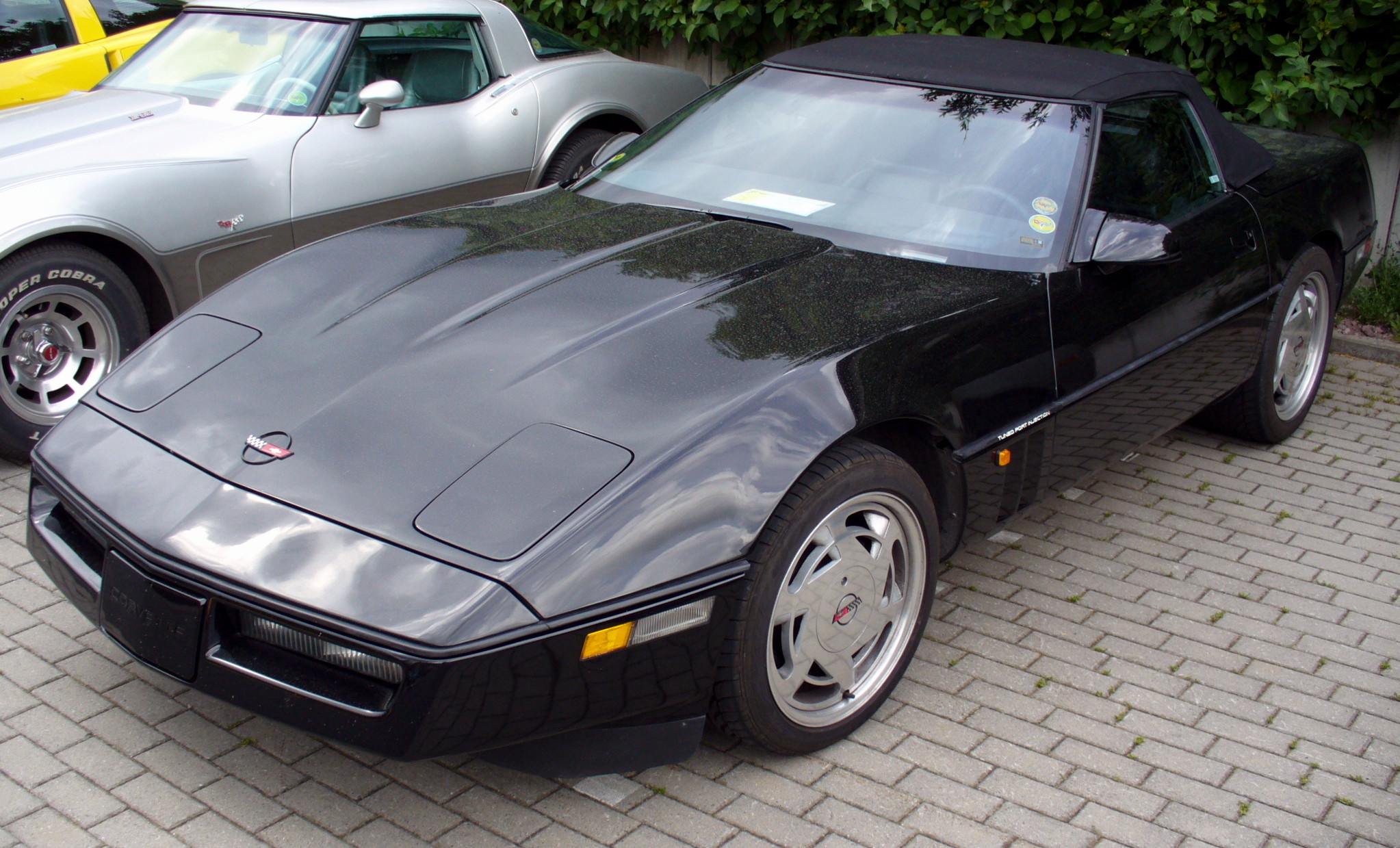
10. **Chevrolet Corvette C4: The Model That Resurrected the Corvette Name**The Chevrolet Corvette C4, spanning from 1984 to 1996, frequently gets overlooked in the broader pantheon of Corvette history, often overshadowed by its more celebrated successors. Yet, this generation played a truly pivotal role, single-handedly dragging the Corvette nameplate into the modern era and unequivocally proving that America could still produce a world-class sports car. Its ‘underrated’ status belies its profound influence and engineering advancements.
The C4 brought significant leaps in both design and performance. Its sleek, angular bodywork, with a notably low drag coefficient, marked a dramatic departure from the curvaceous C3. More critically, the C4 featured two key engines that truly defined its performance pedigree: the renowned LT5 and LT4, which, in the revered ZR1 variant, delivered a formidable 375 to 405 hp. The ZR1, in particular, was a performance powerhouse, meticulously engineered by Lotus, solidifying the C4’s position as a genuine contender against more exotic machinery of its time, making it significantly lighter, sharper, and faster than its predecessor.
Beyond sheer power, the C4 Corvette was engineered for an engaging driving experience. It boasted a lower center of gravity and a newly designed suspension system that provided precise handling and a much more composed ride than previous generations. This combination made it a well-rounded sports car that felt genuinely modern. For enthusiasts, the C4 represents an important piece of Corvette history, offering incredible value and a compelling driving experience that remains accessible today, truly reestablishing the Corvette as America’s definitive sports car.
Car Model Information: 2023 Mazda Mazda3 FWD w/Select Package
Name: Chevrolet Corvette (C4)
Caption: 1994 Chevrolet Corvette
Manufacturer: Chevrolet
Production: January 3, 1983 – June 20, 1996
ModelYears: 1984–1996
Predecessor: Chevrolet Corvette (C3)
Successor: Chevrolet Corvette (C5)
Class: Sports car
Assembly: Bowling Green, Kentucky
BodyStyle: targa top,Convertible (car)
Layout: Front-engine, rear-wheel-drive layout#FMR
Platform: GM Y platform
Wheelbase: cvt
Length: cvt
Width: cvt
Height: Coupe: {{cvt,46.7,in,mm
Transmission: automatic transmission,Overdrive (mechanics),GM 4L60-E transmission,ZF Friedrichshafen
Engine: {{cvt,350,cuin,L,1,Chevrolet small-block engine (first- and second-generation)#L83
Weight: cvt
Designer: Jerry Palmer
Related: Callaway Cars#C4 (RPO B2K Callaway Twin Turbo Corvette),Callaway Cars#C4 (RPO B2K Callaway Twin Turbo Corvette),Callaway Cars#C4 (RPO B2K Callaway Twin Turbo Corvette),Callaway Cars#C6 (Callaway SuperNatural Corvette),Callaway Cars#C4 (RPO B2K Callaway Twin Turbo Corvette)
Categories: 1990s cars, All articles with dead external links, All articles with unsourced statements, Articles with dead external links from November 2016, Articles with permanently dead external links
Summary: The Chevrolet Corvette (C4) is the fourth generation of the Corvette sports car, produced by American automobile manufacturer Chevrolet from 1983 until 1996. The convertible returned, as did higher performance engines, exemplified by the 375 hp (280 kW) LT5 found in the ZR1. In early March 1990, the ZR1 would set new records for the highest average speed over 24 hours at over 175 mph (282 km/h) and highest average speed over 5,000 miles at over 173 mph (278 km/h). With a completely new chassis, modern sleeker styling, and other improvements to the model, prices rose and sales declined. The last C4 was produced on June 20, 1996.
Get more information about: Chevrolet Corvette (C4)
Buying a high-performing used car >>>
Brand: Chevrolet Model: Corvette C4
Price: $17,197 Mileage: 57,859 mi.
Read more about: Kings of the Asphalt: Reliving the Glory Days of 1980s Sports Cars and Supercars That Defined a Generation

11. **Porsche 968: The Culmination of Transaxle Excellence**The Porsche 968 holds a somewhat enigmatic position within the marque’s history, often viewed as one of the most overlooked sports cars of its era. Though technically a heavily updated evolution of the 944, the 968 was, by Porsche’s own account, about 80% different from its predecessor, representing the ultimate refinement of their front-engine, transaxle layout. Its ‘underrated’ perception stems from its brief production run and its position between the iconic 911 and the earlier, less powerful 924.
Powering this refined machine was a sophisticated 3.0-liter four-cylinder engine, notably the largest displacement four-cylinder Porsche had ever produced. This powerhouse delivered a robust 240 horsepower and 225 lb-ft of torque, figures that translated into genuinely solid performance for its time. It showcased Porsche’s engineering prowess, demonstrating how much performance could be extracted from a four-cylinder unit when meticulously developed and naturally aspirated.
The 968 truly excelled in its dynamic behavior. Benefiting from years of continuous development and refinement of the front-engine, rear-wheel-drive transaxle layout, the car handled brilliantly. Its balanced chassis, precise steering, and advanced suspension components allowed it to deliver a driving experience that was just as capable and engaging as the contemporary 911. The 968 is a forgotten gem, a testament to Porsche’s dedication to foundational driving excellence, and one that absolutely deserves more appreciation for its sophisticated blend of power, balance, and engineering integrity.
Car Model Information: 1992 Porsche 968 968
Name: Porsche 968
Manufacturer: Porsche AG
Class: Sports car
Production: 1991–1995
Assembly: Stuttgart
Predecessor: Porsche 944
Successor: Porsche 986
BodyStyle: coupé,convertible
Layout: Front-engine, rear-wheel-drive layout
Engine: Straight-four engine,Turbocharger
Transmission: Manual transmission,Tiptronic
Wheelbase: cvt
Length: 4320 mm
Abbr: on
Width: 1735 mm
Height: 1275 mm
Weight: 1400 kg
Designer: Harm Lagaay
Categories: All articles with unsourced statements, Articles with short description, Articles with unsourced statements from May 2022, CS1: long volume value, CS1 German-language sources (de)
Summary: The Porsche 968 is a sports car manufactured by German automobile manufacturer Porsche AG from 1991 until 1995. It was the final evolution of a series of water-cooled front-engine rear wheel drive models that began almost 20 years earlier with the introduction of the 924. It was intended to take over the entry-level position in the company lineup from the 944, which much of the vehicle was derived from. The 968 was Porsche’s last new front-engined vehicle until the introduction of the Porsche Cayenne in 2003.
Get more information about: Porsche 968
Buying a high-performing used car >>>
Brand: Porsche Model: 968
Price: $16,000 Mileage: 68,003 mi.
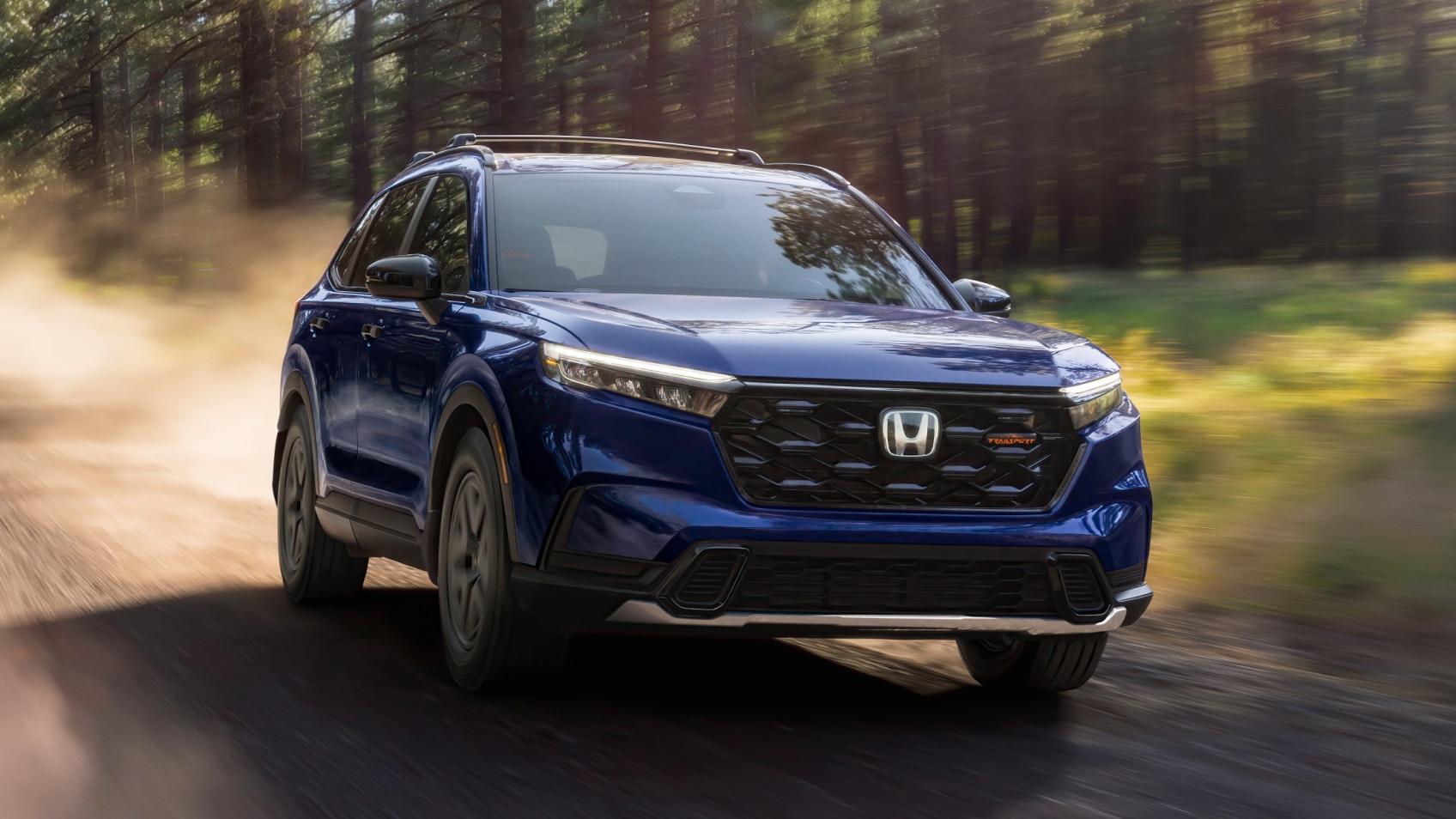
12. **Honda S2000: A Masterclass in High-Revving Precision**The Honda S2000 has long been revered by those in the know as a pure driver’s car, yet it still doesn’t always receive the mainstream credit it truly deserves. Introduced in 1999 to celebrate Honda’s 50th anniversary, this roadster embodies the brand’s engineering philosophy: a focus on precision, high-revving performance, and an unrivaled connection between car and driver. Its ‘underrated’ status is largely due to its nuanced appeal, which caters specifically to the enthusiast looking beyond raw power figures.
Central to the S2000’s legendary status is its powertrain and transmission. Under the hood initially resided the 2.0-liter F20C engine, a naturally aspirated inline-four that produced an astonishing 247 horsepower. This engine was famous for its stratospheric 9,000 rpm redline, delivering an exhilarating, linear surge of power. Paired with a six-speed manual transmission widely regarded as one of the best ever fitted to a sports car—its short, precise throws an absolute joy—the S2000 offered an unparalleled tactile experience.
The dynamic capabilities of the S2000 were equally impressive. Its razor-sharp handling, perfectly balanced chassis, and lightweight construction combined to create a performance machine that rewarded skill behind the wheel. The later AP2 model, with its 2.2-liter F22C1 engine, maintained this ethos while offering a slightly broader torque band. The S2000 is a testament to Honda’s unwavering commitment to driver engagement, delivering a pure, unadulterated sports car experience that continues to inspire passion and command respect from those who truly understand its profound capabilities.
Car Model Information: 2002 Honda S2000 Base
Name: Honda S2000
Manufacturer: Honda
Production: 1999–2009 (110,673 produced)
Class: Sports car
Layout: Front-engine, rear-wheel-drive layout#Front mid-engine, rear-wheel-drive layout
BodyStyle: Roadster (automobile)
Designer: Shigeru Uehara
Caption: 2005 Honda S2000 (AP2)
Predecessor: Honda S800
Categories: 2000s cars, All articles lacking reliable references, Articles lacking reliable references from May 2024, Articles with short description, CS1: unfit URL
Summary: The Honda S2000 is a front-mid engine open top sports car that was manufactured by Japanese automobile manufacturer Honda, from 1999 until 2009. First shown as a concept car called the SSM at the Tokyo Motor Show in 1995, the production version was launched on April 15, 1999, to celebrate the company’s 50th anniversary. The S2000 is named for its engine displacement of two liters, while “S” stood for “sports” carrying on in the tradition of the S500, S600, and S800 roadsters of the 1960s.
Several revisions were made throughout the car’s production life, including changes to the engine, gearbox, suspension, interior and exterior. Officially two variants exist: the initial launch model was given the chassis code AP1; though cosmetically similar, the facelifted version, known as the AP2 in North America and Japan, incorporated significant changes to the drivetrain and suspension. Production of the S2000 ceased on August 19, 2009.
The Honda S2000 was notable for its exceptional specific power output of about 92 kW (124 hp) per liter, or about two horsepower per cubic inch, the highest of any mass production, naturally aspirated car, until 2010.
Get more information about: Honda S2000
Buying a high-performing used car >>>
Brand: Honda Model: S2000
Price: $35,000 Mileage: 24,000 mi.
Read more about: Unearthing Hidden Performance: 14 Underrated Sports Cars That Defy Expectations for Today’s Performance Seekers
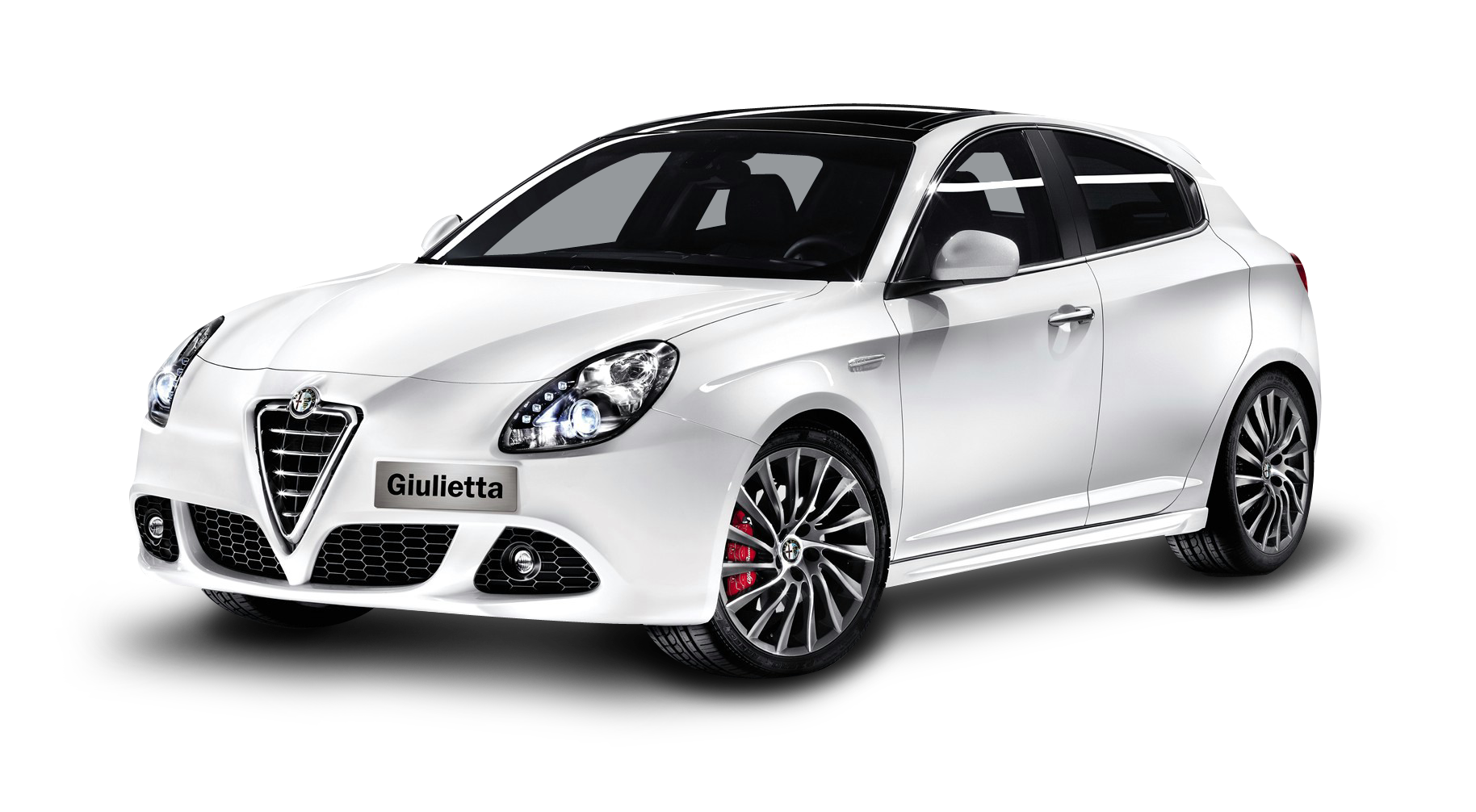
13. **Alfa Romeo 4C: Carbon Fiber Purity and Nimble Italian Flair**The Alfa Romeo 4C is a testament to minimalist performance, a lightweight, mid-engine sports car meticulously designed for driving purists. Though it might lack the outright power of some larger, more established rivals, its unique construction and uncompromised focus on agility and driver connection often lead to its ‘underrated’ classification. It’s a striking example of Italian flair meeting carbon fiber purity, creating an experience that is both raw and utterly captivating.
At its heart, the 4C is powered by a turbocharged 1.75-liter engine, producing a respectable 237 horsepower. While these figures might seem modest on paper, the true magic lies in the car’s astonishingly low curb weight, largely thanks to its carbon-fiber monocoque chassis, which keeps the total mass under 2,500 pounds. This power-to-weight ratio translates into impressive acceleration and incredibly agile handling, making the 4C an absolute joy on winding roads and racetracks where its small size and exceptional dynamics truly shine.
Beyond its engineering prowess, the 4C boasts distinctive Italian styling that makes it instantly recognizable and visually arresting. Its compact dimensions, aggressive lines, and purposeful stance ensure it stands out from the crowd. While it deliberately eschews many luxury features found in competitors, its singular focus on performance and raw driver engagement more than compensates, delivering unfiltered thrills at an accessible price point for a carbon-fiber-chassis sports car. The Alfa Romeo 4C is a bold, uncompromising statement, a pure driving instrument.
Car Model Information: 2023 Mazda Mazda3 FWD w/Select Package
Name: Alfa Romeo 4C,Alfa Romeo 4C Spider
Manufacturer: FCA Italy
Production: [object Object]
Assembly: Modena
Class: Sports car
Layout: Rear mid-engine, rear-wheel-drive layout
BodyStyle: coupé
Engine: Fiat Pratola Serra modular engines,Turbocharger,Straight-four engine
Transmission: Dual clutch transmission,FPT C635 DDCT transmission
Wheelbase: 2380 mm
Abbr: on Coupé
Length: 3989 mm
Width: 2090 mm
Height: 1183 mm
Weight: 940 kg
Related: Abarth Classiche 1000 SP
Designer: Marco Tencone
ModelYears: 2014–2020
Categories: Alfa Romeo concept vehicles, Alfa Romeo vehicles, All articles with unsourced statements, Articles with short description, Articles with unsourced statements from April 2022
Summary: The Alfa Romeo 4C (Type 960) is a mid-engined sports car that was produced by Italian car manufacturer Alfa Romeo. Unveiled at the 2013 Geneva Motor Show, the 4C was initially only available as a coupé, with a spider body style coming a few years later in 2015. The name 4C refers to its straight-four engine.
Get more information about: Alfa Romeo 4C
Buying a high-performing used car >>>
Brand: Alfa Romeo Model: 4C
Price: $17,197 Mileage: 57,859 mi.

14. **BMW Z3 M Roadster: A Potent Blend of Classic Charm and M Performance**The BMW Z3 M Roadster, produced between 1998 and 2002, is a rare gem in the world of sports cars, offering a compelling fusion of classic roadster charm and unadulterated M performance. Its ‘underrated’ status is often a result of being overshadowed by the more widely recognized BMW M3 models, despite sharing a significant portion of its performance DNA. Yet, for those who seek an iconic open-top experience with serious dynamic capabilities, the Z3 M Roadster presents an incredibly appealing, often overlooked, package.
Under the Z3 M’s elongated hood resides the legendary S50/S52 3.2-liter straight-six engine, the very same powerplant found in the highly acclaimed E36 M3. This engine generates a potent 240 horsepower (in US spec), delivering a thrilling, linear surge of power that makes the Roadster an incredibly exciting car to drive. The harmonious coupling of this high-revving engine with a precise manual gearbox ensures a deeply engaging and visceral connection between driver and machine, true to the M division’s ethos.
The Z3 M Roadster was engineered for dynamic prowess, featuring precise handling, exceptional grip, and a classic rear-wheel-drive layout. Its finely tuned suspension and widened track, compared to the standard Z3, enhance its cornering abilities, ensuring an exhilarating experience on twisty roads. Visually, its classic low-slung design and aggressive M-specific styling cues, including quad exhaust pipes and distinctive wheels, give it a timeless appeal. This potent blend of performance, style, and BMW’s engineering integrity makes the Z3 M Roadster an outstanding and genuinely ‘underrated’ choice for enthusiasts seeking a high-performance classic that delivers thrills without compromise.
As we pull back the curtain on these remarkable machines, it becomes abundantly clear that the true measure of a sports car extends far beyond headline-grabbing horsepower figures or inflated collector market values. From the high-revving rotary magic of the Mazda RX-8 to the timeless agility of the Honda S2000 and the pure, unadulterated M-division thrills of the BMW Z3 M Roadster, these vehicles are a testament to brilliant engineering, distinctive design, and a relentless pursuit of the engaging driving experience.
Car Model Information: 2023 Mazda Mazda3 FWD w/Select Package
Align: right
Direction: vertical
Width: 220
Caption1: 2006–2008 Z4 M Roadster
Caption2: BMW Z3
Categories: Articles with short description, BMW vehicles, CS1 maint: numeric names: authors list, Cars introduced in 1998, Cars introduced in 2006
Summary: The BMW M Coupé and BMW M Roadster are high performance models of the BMW Z3 and Z4 coupés/roadsters produced by BMW M. The first generation was based on the Z3 and was produced between 1998 and 2002. The second generation was based on the Z4 and was produced between 2006 and 2008.
All models were produced in the BMW Spartanburg plant in the United States. Some major components— such as the engine and transmission— were imported from Germany.
Get more information about: BMW M Coupé and Roadster
Buying a high-performing used car >>>
Brand: BMW Model: Z3 M Roadster
Price: $17,197 Mileage: 57,859 mi.
They represent a diverse collection of automotive passion, each offering a unique character and a profound connection to the road. For the discerning enthusiast, these are not merely ‘underrated’ cars; they are opportunities. Opportunities to discover exceptional performance, embrace influential heritage, and experience driving joy that transcends fleeting trends, proving unequivocally that some of the greatest automotive treasures are indeed those that whisper, rather than shout, their brilliance. It’s a call to look beyond the obvious and celebrate the unsung heroes of speed, precision, and passion.


